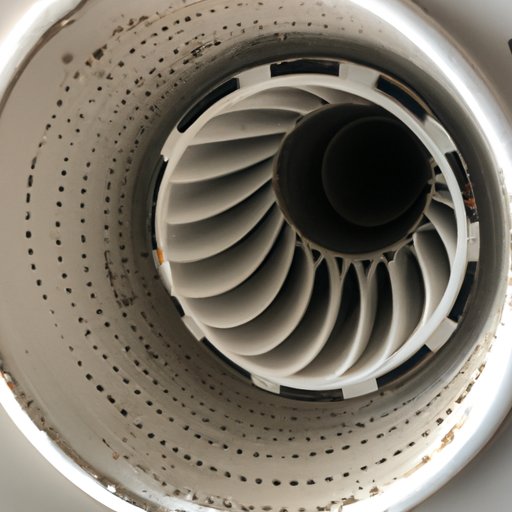Introduction
A dryer vent is a tube that carries hot air and lint from a clothes dryer to the outside of the home. It’s an important part of the home’s ventilation system, as it helps to reduce the risk of fires caused by lint buildup. Regularly cleaning the dryer vent is essential for maintaining a safe home environment, but many homeowners don’t know how often they should be doing it.

Explaining the Benefits of Regular Dryer Vent Cleaning
Regularly cleaning your dryer vent can provide several key benefits, including improved efficiency of the dryer, reduced risk of fire hazards, and increased energy savings. When a dryer vent is clogged with lint and other debris, it can cause the dryer to work harder in order to heat up and dry clothes. This not only increases energy costs, but can also lead to a shorter lifespan for the dryer. A clogged dryer vent can also be a fire hazard, as lint is highly flammable and can easily ignite when exposed to high temperatures.

Comparing DIY Dryer Vent Cleaning to Professional Services
When it comes to cleaning the dryer vent, homeowners have two options: do it themselves or hire a professional. DIY dryer vent cleaning is a relatively simple process and can be done with a vacuum cleaner and brush. However, it’s important to note that this method does not remove all lint and debris from the vent, and can leave some behind. Professional dryer vent cleaning services use specialized equipment to thoroughly clean the vent, ensuring that all lint and debris are removed. While professional services tend to be more expensive than DIY methods, they can provide peace of mind that the job has been done correctly.
Outlining the Dangers of a Clogged Dryer Vent
Failing to regularly clean the dryer vent can result in a number of dangerous consequences. One of the most serious issues is the risk of fires caused by lint buildup. Lint is highly flammable and can easily ignite if exposed to high temperatures, making it essential to remove it from the vent on a regular basis. In addition to fire hazards, a clogged dryer vent can also lead to health risks related to mold and mildew, which can grow in damp environments. These can cause respiratory problems and other illnesses, so it’s important to keep the vent free of moisture.
Examining Different Types of Dryer Vents and Their Cleaning Requirements
There are three main types of dryer vents: standard dryer vents, flexible metal ducts, and plastic or vinyl ducts. Standard dryer vents are typically made of metal and require minimal cleaning. Flexible metal ducts are more susceptible to lint buildup, so they should be cleaned more often. Plastic or vinyl ducts can accumulate lint and debris more quickly, so they should be cleaned at least once every three months.

Breaking Down the Cost of Dryer Vent Cleaning
The cost of dryer vent cleaning will vary depending on the type of service you choose. For DIY dryer vent cleaning, you’ll need to purchase a vacuum cleaner and brush, which can range in price from $50-$100. If you opt for a professional service, you can expect to pay anywhere from $75-$150, depending on the size of the vent and the complexity of the job. Additionally, some companies may charge an hourly rate for their services.
Investigating the Frequency of Dryer Vent Cleaning for Different Households
The frequency of dryer vent cleaning will depend on several factors, including household size and usage. Generally speaking, households with larger families and those who do frequent loads of laundry should have their dryer vents cleaned more often than smaller households or those who do fewer loads. It’s recommended that dryer vents be cleaned at least once a year, but households with larger families or higher usage should consider cleaning theirs twice a year.
Conclusion
Regularly cleaning your dryer vent is essential for maintaining a safe and efficient home. While the frequency of cleaning will vary based on household size and usage, it’s recommended that dryer vents be cleaned at least once a year. Doing so can help to improve the efficiency of the dryer, reduce the risk of fires caused by lint buildup, and save energy costs. With the right tools and knowledge, homeowners can easily tackle the task themselves, or they can hire a professional service for a more thorough job.


